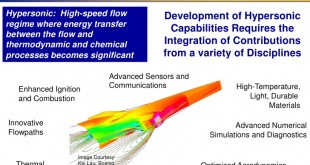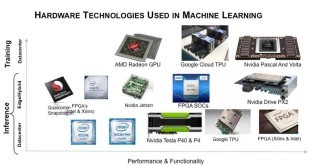In the dynamic landscape of international relations, Europe finds itself at a crossroads, grappling with rising geopolitical tensions within the continent and the broader rift between the West and China. Within Europe, the ongoing war in Ukraine and its ripple effects on energy markets and supply chains have cast a …
Read More »Hypersonic Technologies Race: Overcoming Gaps, Obstacles, and Technological Challenges in the Pursuit of Hypersonic Weapons
Introduction: The era of hypersonic flight has dawned upon us, ushering in a new age of aerospace technology. Hypersonic refers to aircraft, missiles, rockets, and spacecraft that can reach speeds through the atmosphere faster than Mach 5, which is nearly 4,000 miles per hour. This paradigm shift in aviation has …
Read More »Powering the Battlefield: Exploring the Military Power Technologies and Solutions Market
In the dynamic and evolving arena of modern warfare, military power technologies and solutions play a pivotal role in ensuring operational preparedness, tactical agility, and strategic superiority. From powering sophisticated weaponry to sustaining troops in remote outposts, these technologies form the backbone of modern military operations. Military power solutions are …
Read More »Revolutionizing Wireless Fronthaul in Industrial Environments: Harnessing Terahertz Frequencies
Introduction: The relentless growth of the Internet of Things (IoT) has driven the demand for high-speed, reliable, and low-latency wireless connectivity in indoor industrial environments. Cell-free massive multiple-input multiple-output (CF-mMIMO) networks have emerged as a promising solution to meet these demands, offering enhanced network capacity and coverage. However, CF-mMIMO networks …
Read More »Unlocking the Secrets of Extreme Environments: Exploring Optical Cryostats and Their Versatile Applications
Introduction: In the ever-evolving landscape of scientific research and experimentation, the need for precise control over environmental conditions has become increasingly paramount. In the realm of scientific exploration, we often venture into the unknown, seeking to unravel the mysteries of extreme environments. From the frigid depths of space to the …
Read More »The Nexus of Environmental and Climate Threats: Implications for Global Security, Military Strategies, and Technological Innovations
Introduction: Climate change is no longer an environmental buzzword; it’s a global security imperative demanding immediate attention. As climate change accelerates and environmental challenges intensify, the world is witnessing a shift in the dynamics of geopolitical landscapes, military strategies, and technological innovations. The once-distant threat is rapidly manifesting in tangible …
Read More »Unlocking Quantum Potential: The Boson-Fermion Quantum Engine
Introduction: In the ever-evolving realm of quantum mechanics, scientists are delving into the fascinating world of quantum engines, and one particular innovation is making waves – the Boson-Fermion Quantum Engine. This cutting-edge technology is poised to revolutionize the landscape of quantum computing and energy systems, offering unprecedented capabilities that harness …
Read More »Revolutionizing Disease Diagnosis: The Future of DNA Detection
In the relentless pursuit of better healthcare, scientists and researchers are constantly pushing the boundaries of medical technology, seeking innovative ways to diagnose and treat diseases more effectively. Among the many promising advancements, DNA detection stands out as a transformative force, poised to revolutionize disease diagnosis and usher in a …
Read More »Revolutionizing Real-Time Machine Learning: The Rise of Dedicated AI Chips and Neuromorphic Computing
Introduction: Artificial Intelligence (AI) has been a transformative force, aiming to enhance computers and robots with capabilities surpassing human intelligence. Tasks such as learning, reasoning, decision-making, creativity, knowledge extraction, and data prediction have been the focal points of AI development. Within the vast field of AI, machine learning (ML) has …
Read More »Transforming Power Transmission with Alternating Direct Current (ADC) and AI
Introduction: In the dynamic landscape of energy technology, Alternating Direct Current (ADC) has emerged as a transformative force, promising lossless power transmission. This article explores the synergy between ADC and artificial intelligence (AI), unraveling how this innovative approach is reshaping the future of clean and efficient electricity distribution. The Challenges …
Read More » International Defense Security & Technology Your trusted Source for News, Research and Analysis
International Defense Security & Technology Your trusted Source for News, Research and Analysis


